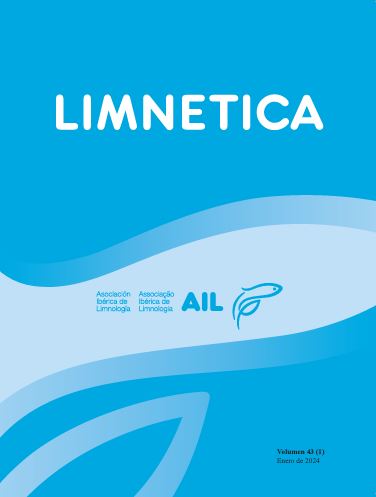Benthic macroinvertebrates community structure and physicalchemical characteristics at Lauca River Basin high altitude wetlands, Altiplano, Chile
Resumen
High Andean freshwater ecosystems are highly threatened by scarce water availability, species invasion, and global climate change, so generating knowledge about their ecological characteristics is extremely important for conservation decision-making. In this work, the seasonal variations and relationships between physico-chemical variables and the structure and composition of the macroinvertebrate community were analyzed considering “season”, “type of ecosystem” and “site” factors. Five sites of representative ecosystems at Lauca River Basin of the Chilean Altiplano were sampled, two of them lentic and three lotic. Two field-sampling periods within a year according to the pre- and post-rain seasons characteristic of the Altiplano climate were considered. Thirty-five taxa were identified, and it was observed that the taxa Orthocladiinae, Austrelmis sp., Hyallela cf kochi, Podonominae and Helicopsychidae were indicator taxa that contributed the most to differences among sites or ecosystems (≥ 10 %.). No significant differences were found in the alpha diversity indicators used, except for some abundance values and Pielou’s Evenness index (J´), which varied significantly between lotic and lentic systems. The results of the ordination analysis showed a significant differentiation considering physical and chemical variables and macroinvertebrates assemblages that responded to “sites” (ANOSIM R Global = 0.64, p = 0.001) and “type of ecosystem” factors (ANOSIM R Global = 0.31, p = 0.02). The “season” factor was not statistically significant to explain the variability of biological data (ANOSIM R Global = -0.003, p = 0.47) and was slight and marginally significant with the physical and chemical data (ANOSIM R Global = 0.1, p = 0.04). In addition, the linear redundancy analysis (RDA) showed that physico-chemical variables related to hardness, temperature, phosphorous, and nitrogen explained most of the variance in the biological data (the first two canonical axes RDA1 and RDA2 explained 45.23 % of the total variation, p = 0.004). These results support the relevance of local conditions for high altitude wetlands and how those environmental characteristics can be reflected in the macroinvertebrate assemblages that inhabit them.
Descargas
Publicado
Número
Sección
Licencia
Los autores que publican en esta revista están de acuerdo con los siguientes términos:
- Limnetica está bajo una licencia de Creative Commons Atribución-NoComercial 4.0 Internacional.
b. Los autores pueden establecer por separado acuerdos adicionales para la distribución no exclusiva de la versión de la obra publicada en la revista (por ejemplo, situarlo en un repositorio institucional o publicarlo en un libro), con un reconocimiento de su publicación inicial en esta revista.
c. Se permite y se anima a los autores a difundir sus trabajos electrónicamente (por ejemplo, en repositorios institucionales o en su propio sitio web) antes y durante el proceso de envío, ya que puede dar lugar a intercambios productivos, así como a una citación más temprana y mayor de los trabajos publicados (Véase The Effect of Open Access) (en inglés).


